The Best Floss EVER!!!
I love it! Easy to use, never gets stuck and in an easy to use glass container - no plastic! Lasts a long time:)
| Taste |
Rated 5 out of 5
|
|---|---|
| Product Quality |
Rated 5 out of 5
|
| Results |
Rated 5 out of 5
|
The human body is incredible, it is designed to thrive if only we give it the support it needs. At The Dirt we design all of our products to support your bodies natural ability to thrive! From helpful herbs to mouth friendly minerals our formulations are bright smile friendly and taste bud approved.
Our ingredients are chosen to provide effective cleaning, healing and prevention. Combined with a tooth friendly diet rich in calcium, magnesium, K2, D and lipids your body will have all it needs to thrive with a big bright smile.

Our floss is fully biodegradable in a natural environment, compared to plastic floss that does more harm than good!
We didn't stop there, not only did we want to bring you a plastic free floss, it's a completely plastic free product! Our beautiful little spool of silk floss comes in a recyclable re-usable glass vial with a metal top! Finally we managed to house this great new product in a paperboard box!
Order 2 of any Oil Pulling Mouthwash and receive 1 free! You must add all
3 Oil Pulling Mouthwash to your cart in order for the discount to apply.
(*Special offer not applicable on subscriptions, must be same size product.)
Our floss is an earth friendly thread made of natural silk that bio-degrades safely and easily.
Did you know around 3 MILLION miles of floss is purchased in North America every year? Nearly all of that is seagull choking, turtle wrangling plastic thread that won't biodegrade for thousands of years. Be the change... switch to our natural biodegradable silk floss, the ocean will thank you!
Our floss is lightly coated with natural beeswax and essential oils to slip easily between the teeth with a refreshing touch of mint!
It comes in a recyclable glass and metal container in a paper box, it's plastic free and we're proud to add it to our line!
✦ Adults & Children
✦ Normal Natural Teeth
✦ Crowns, Bridges & Veneers
✦ Sensitive Teeth
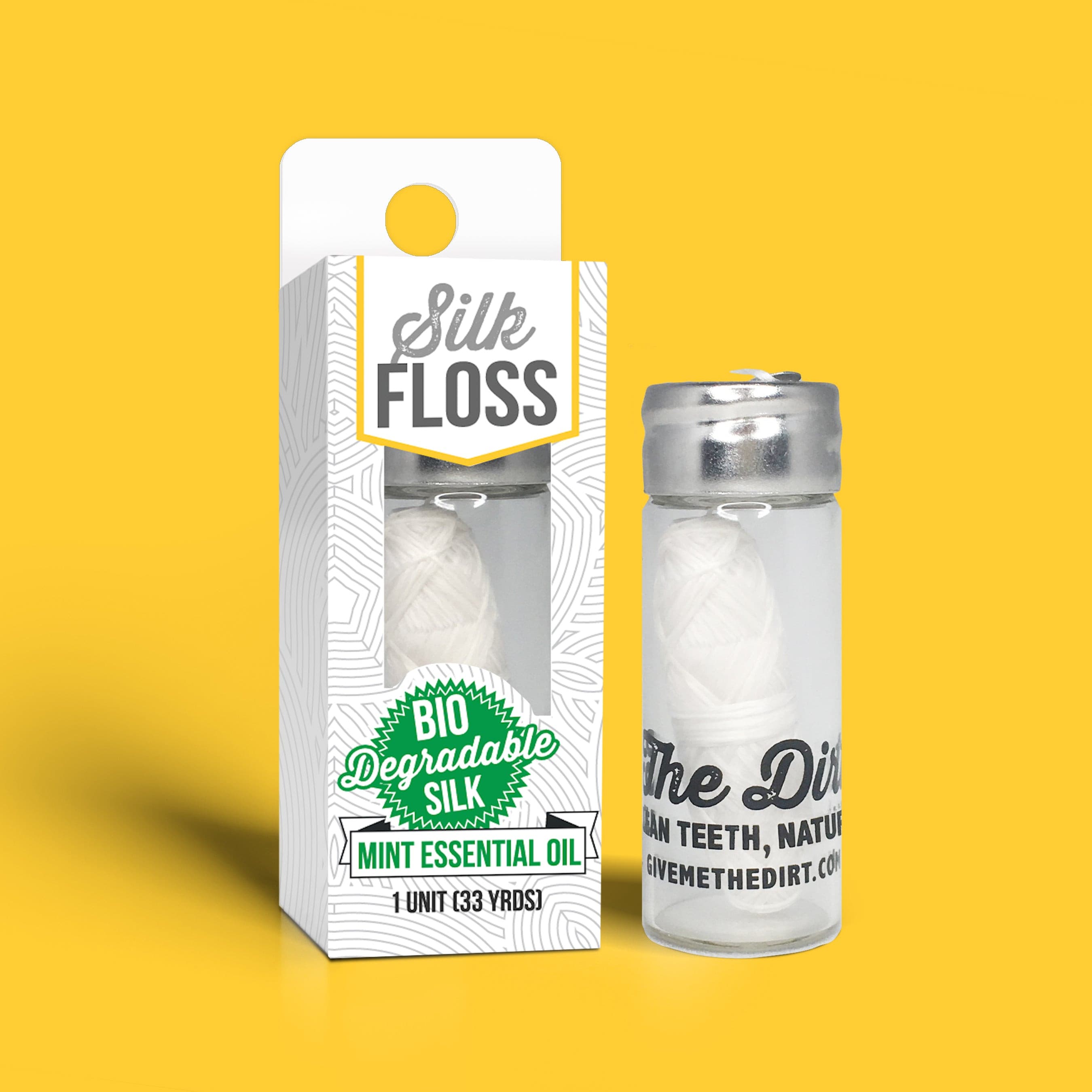

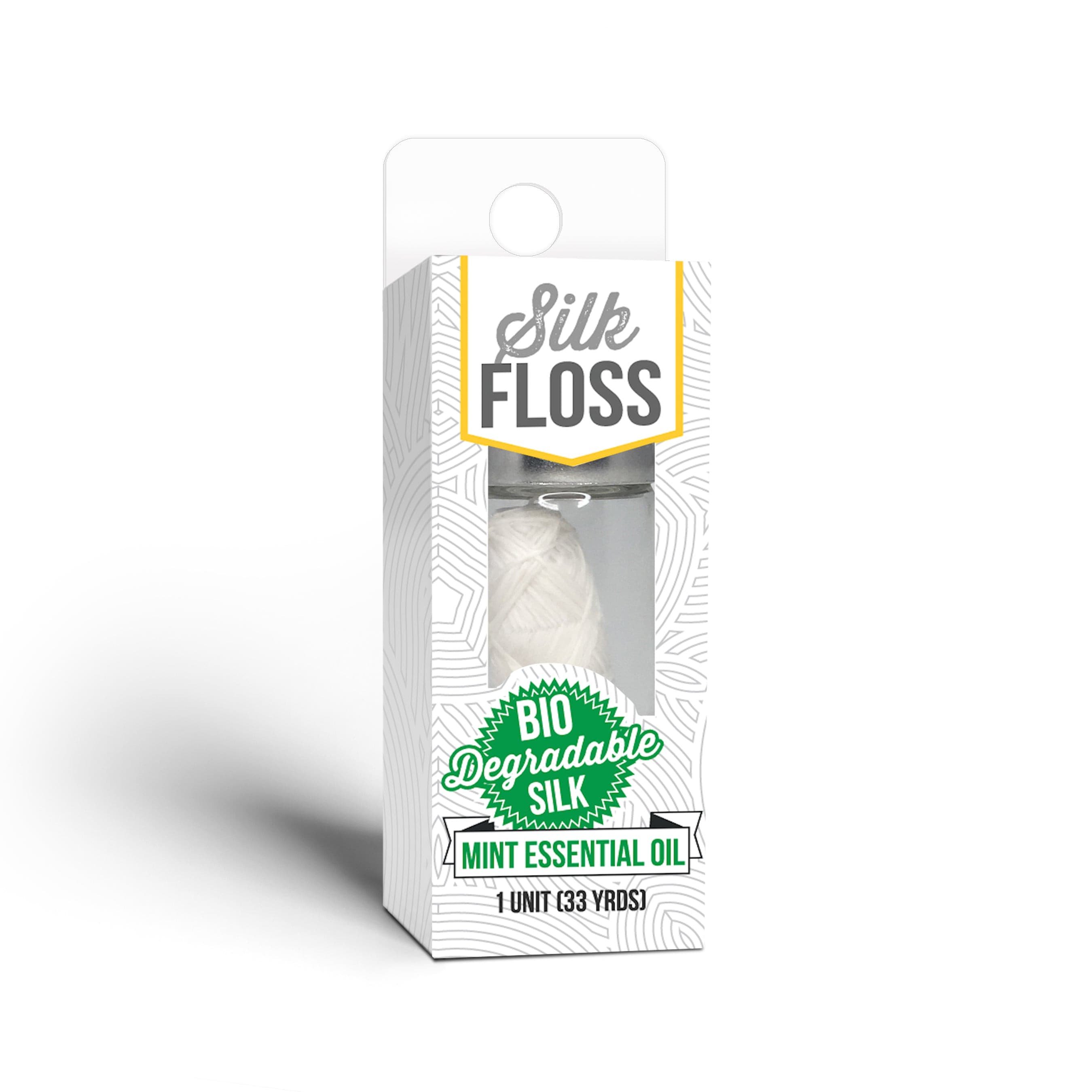
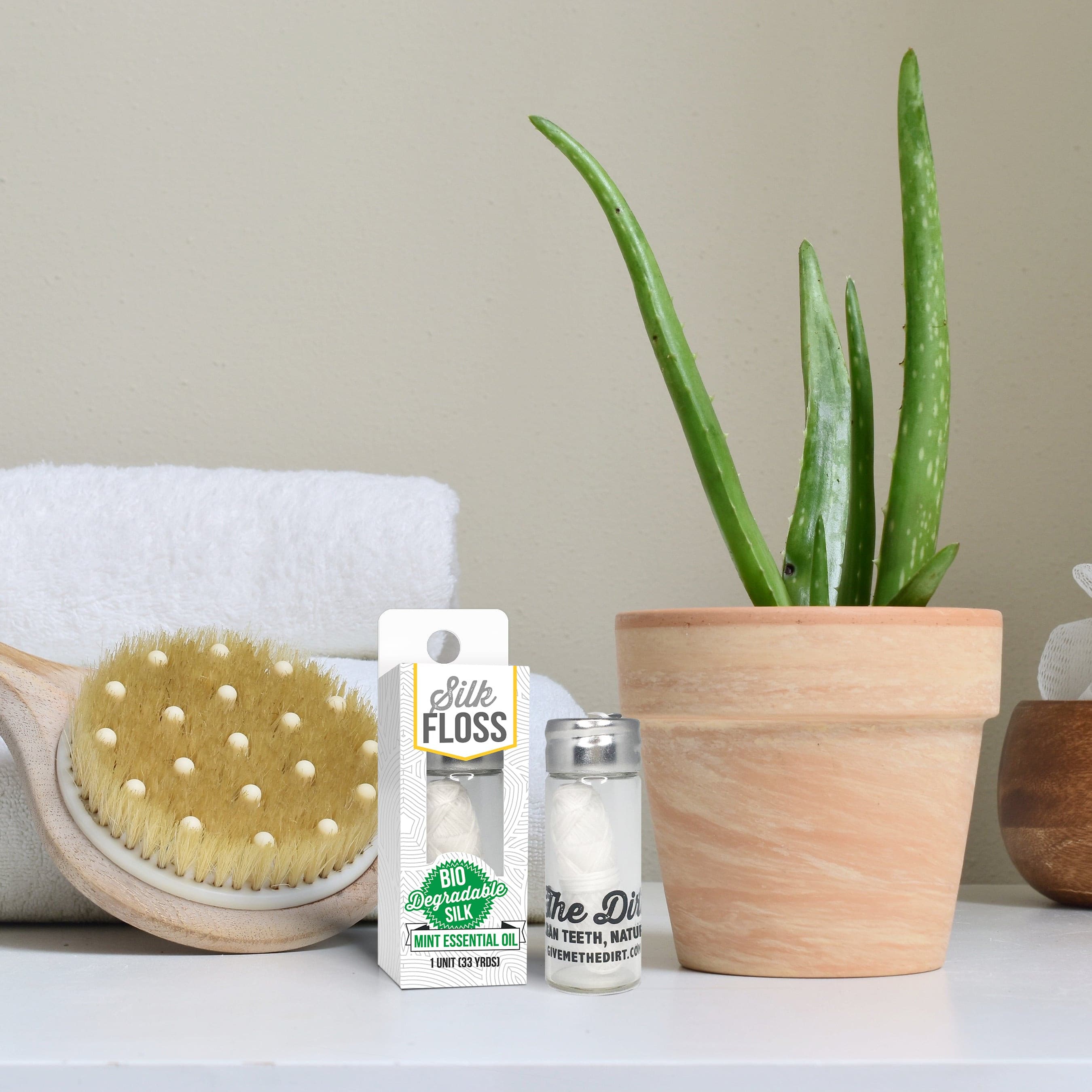
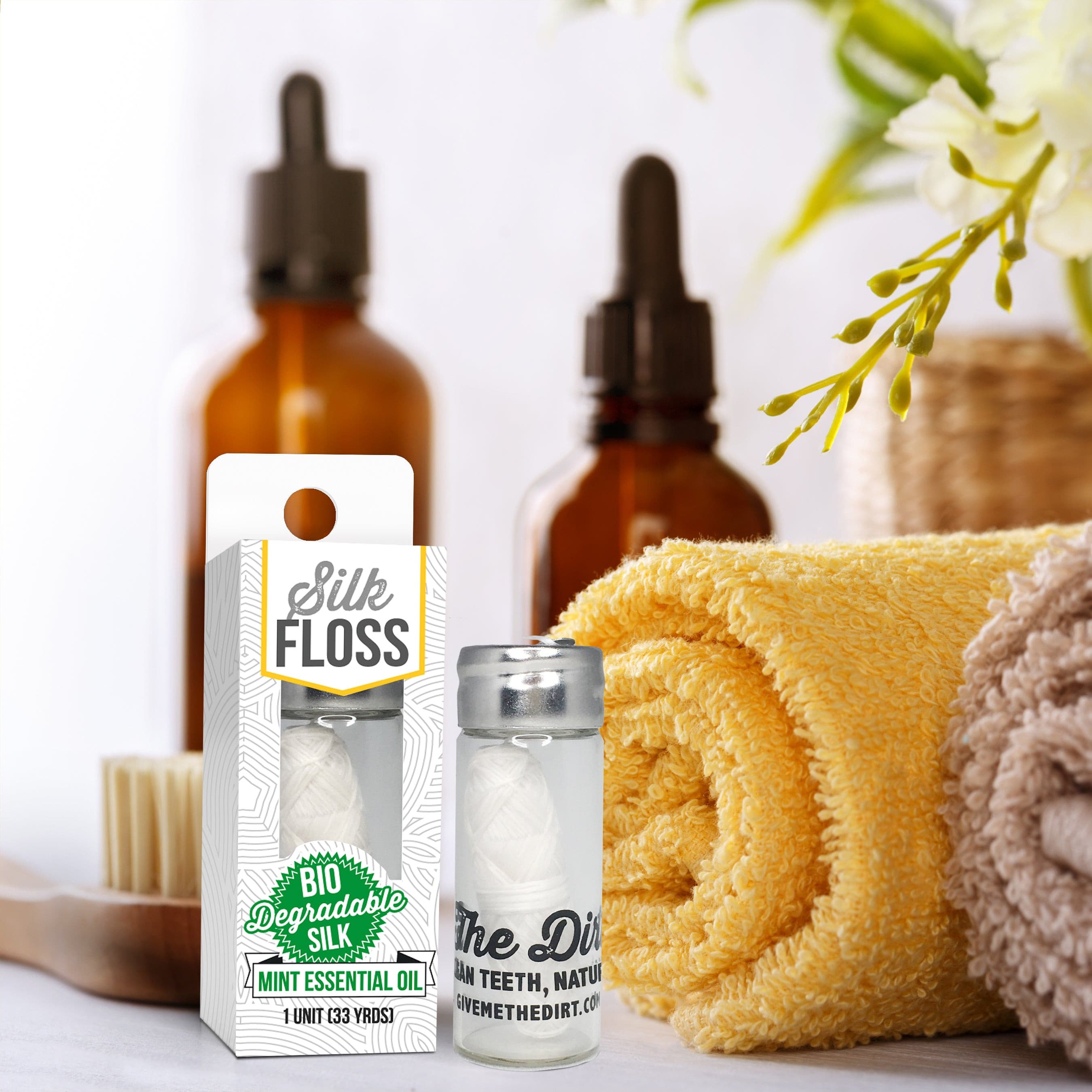
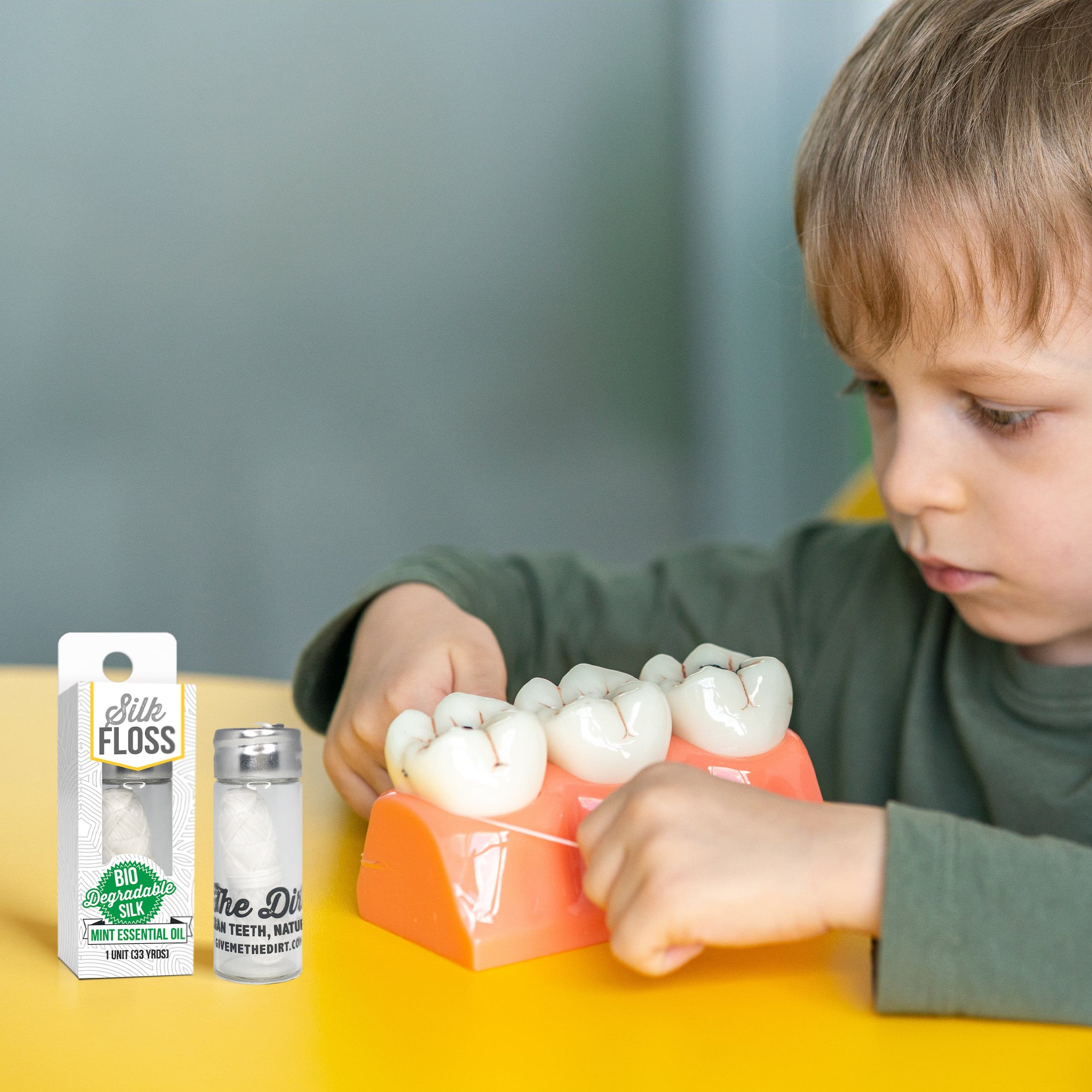
We are committed to brining you high quality, natural, effective oral care with a conscious approach, because we know those values are just as important to us as they are to you.



